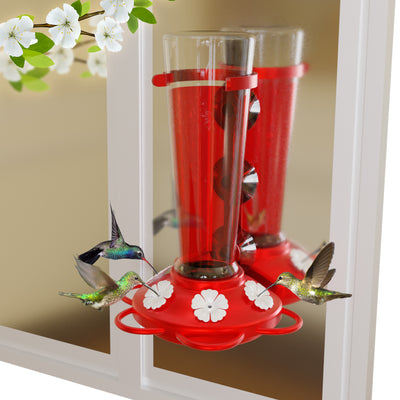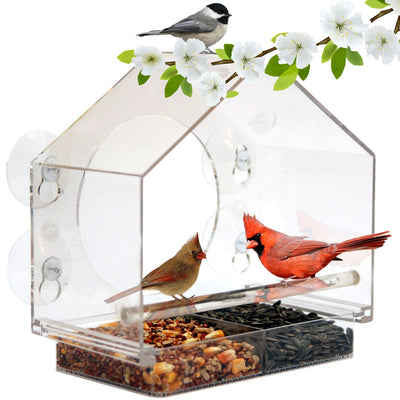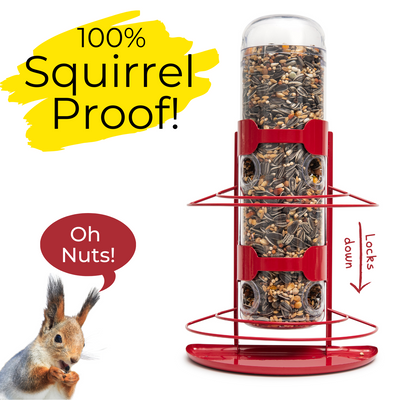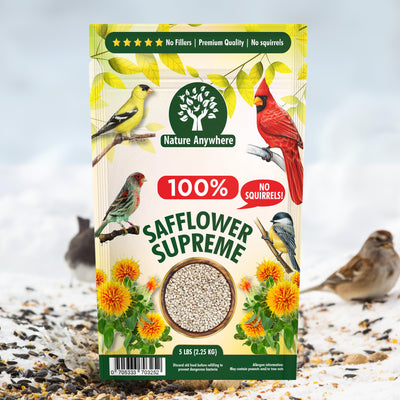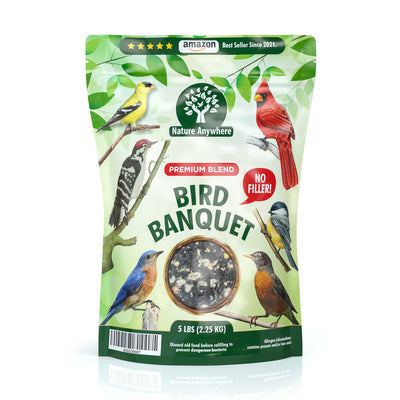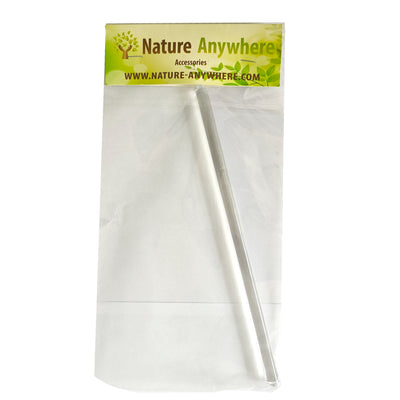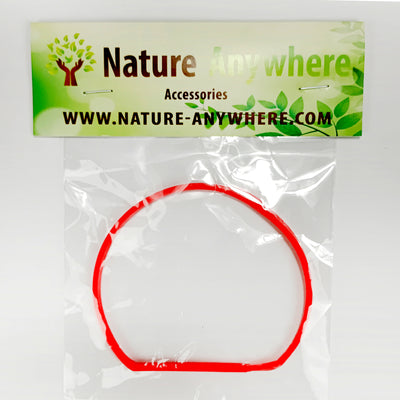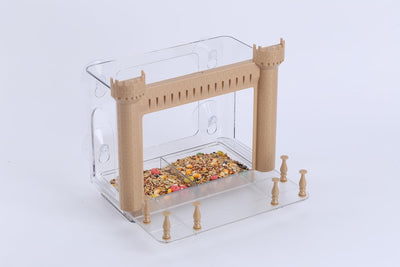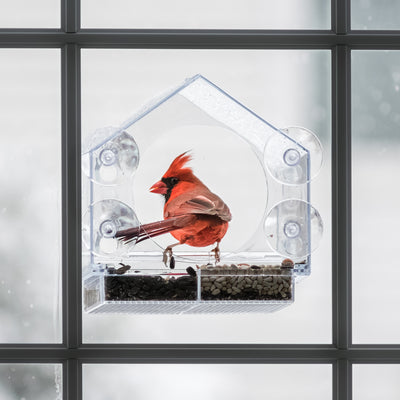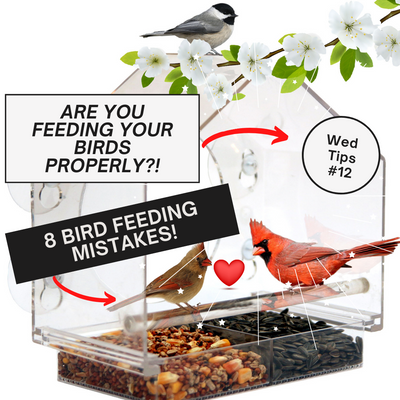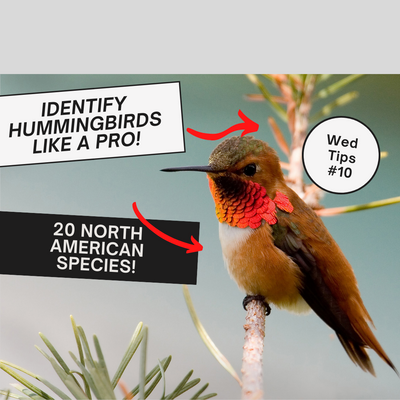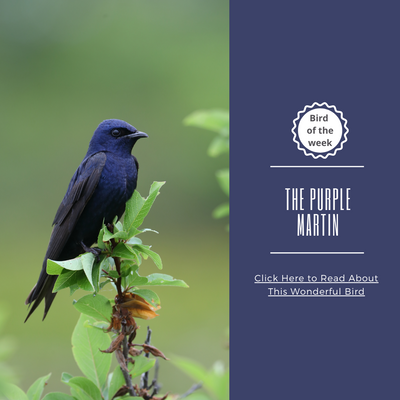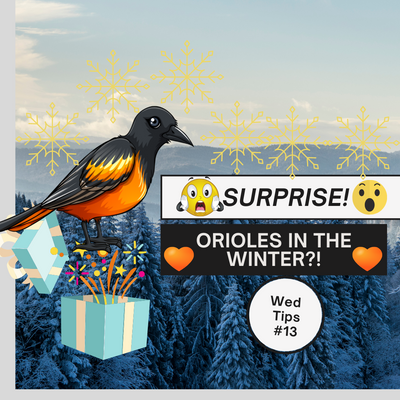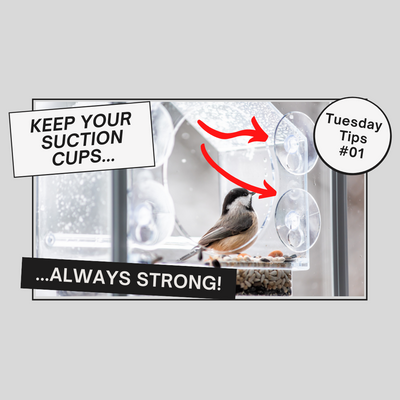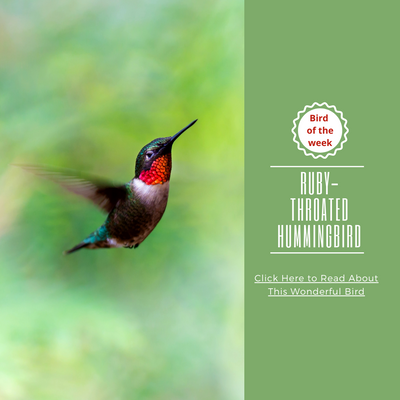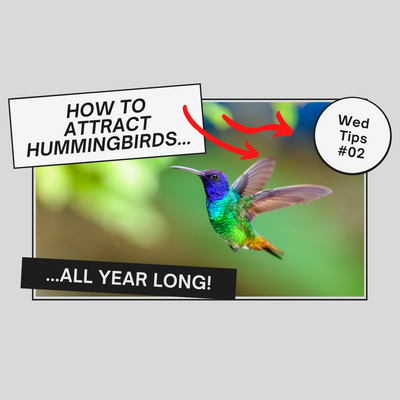BIRD CARD: ANNA'S HUMMINGBIRD

No bigger than a golf ball and no heavier a teaspoon of sugar, sweet Anna’s Hummingbird will make a striking impression anywhere they fly. And what a flight. Soaring high up in the sky, then nose-diving down at 60 MPH, all the while showing off their iridescent forest-green feathers and shimmering rose-pink throats these birds are essentially flying gemstones.
In fact, last century their feathers were used for decorating hats. Thankfully that apparel habit has ceased.
Anna’s Hummingbirds are among the most common of it’s kind in the West Coast. Since the 1950s, they have expanded their breeding range both north and east of the US from Alaska, down west to British Columbia to California to Arizona and even further east.
The reason for this expansion is due to the many of us who offer them our garden flower patches as well as the nectar in hummingbird feeders. Though Anna's Hummingbirds live in a wide variety of habitats, including chaparral and open woods, many of them are now in suburban areas where their exotic shrubs and feeders are supplied. By now, Anna’s hummingbirds have reached the total population of 1.5 million.
Anna’s hummingbirds are friendly little birds, but once nesting begins, watch out. They become super territorial and will make sure you know it. It’s best to keep a distance until the breeding season is over. Since they don’t migrate we can enjoy their company year round. And once their hatchlings fly, they return to a more social mode.
Because their tiny leg size, Anna’s hummingbirds can’t hop nor walk. However, while perched on a branch they can scoot sideways like a crab.
Anna's Hummingbirds normally have a body temperature of around 107 degrees Fahrenheit. Not a temperature a human can survive! Interestingly when the season turns cold, Anna's hummingbirds as well as species of its kind, slow down their heart rate and breathing pace to the point where their lower their heart pace and their body temperature to about 48 degrees Fahrenheit. When the warm seasons return, the hummingbirds can become active again in just a few minutes.
LOOKS

Anna’s Hummingbird is named after Duchess Anne Massena, who lived in the 19th century, the daughter of a general, married to Victor Massena, an avid bird collector.
The shiny throat patch of male Anna’s hummingbird is called a gorget. It extends over its head, like a bonnet or a balaclava. It’s the only bird in the US that has this kind of coloring. Unlike any other species, female Anna’s are decorated with a tiny red gorget.
Anna’s Hummingbirds are about 4 to 4.3 inches long, weighing about 0.17 ounces, the weight of a nickel. Females and juveniles have more of a grey coloring, more than other of its species with their little splash of red on their throat. They have a grey chest and belly, and a dark, rounded tail with white tips on the outer feathers.
The oldest recorded Anna's Hummingbird was at least 8 years, 2 months old, when it was recaptured and rereleased during a banding operation in Arizona.
EATS

Anna’s Hummingbirds feed from nectar, usually while hovering, extending their bill and long tongue deep into the tubular shaped flowers. Same with hummingbird feeders, though they might also perch.
They catch small insects in midair, or hover over foliage to spot and pluck insects and lipid sources.
They have a fascinating technique: they aim at the insects with their bills and at the very last second open their mouths wide and gobble them up. This technique was finally documented using specialized high speed cinematography.
BIRD FEEDERS
Anna’s Hummingbirds are welcome backyard visitors and are easy to attract.
Hang your hummingbird feeder, then fill it with your own hummingbird food and wait for the guests to arrive.
Remember: don't use honey or food coloring. It is actually bad for them. They think they are getting full when they are actually consuming empty calories.
Anna’s don’t migrate much, so don’t be surprised if the bird visits your feeder all year long!
SOUNDS
Anne hummingbirds are the only one with a song! A song they will make sure you hear, and hear well. They want the females attention and will not stop until they get it.
Their famous chirp is not a chirp at all. It comes from the flapping of their tails. High air speeds cause the feathers to vibrate with an audible resident frequency.
ANNA'S PART-TIME LOVING
Mating and breeding begins in May until around December. In a dazzling courtship display, the male hovers in midair, chirping away in song, soaring much higher only to nose-dive steeply toward the female, while making a loud explosive popping sound at the bottom of the dive. He then continues to buzz back and forth in front of the female in short shuttling flights.
Anna’s Hummingbirds do not mate for life. The females are the main captains of the nesting ship. They construct the nest, incubate the eggs, and feed the hatchlings solo.
Female Anna’s build their nests on a wide variety of surfaces, most often on the fork of branch, shrub tree or a thin stem of a plant. The nests are placed 10-90 feet from the ground, and never more than half a mile from suitable food sources.
Anna’s hummingbird puts much effort into building her nest, more than many other birds. She can make up to 150 trips in a day and takes up to a week of hard toil that take most hours of her day. The energy spent it so great, that she often has to leave the eggs unguarded to find food. But she never leaves them for too long.

The nests are cup-shaped, made of plant fibers, spider webs, feathers and lichen exterior. The nest is made of these soft materials so as the birds grow, the nest expands with them.
By the way, you will never find them. The nests are as big as a walnut and super hard to spot, as they are well hidden from sun, rain and predators. A wise move for such a small vulnerable flyer.
The female incubates around 2 jelly-bean sized eggs for 14-19 days. She feeds and cares for them by herself, sticking her bill deep into their mouths and regurgitating tiny insects, sometimes dipped in nectar.
After about 17 days, the little ones will start to practice moving their wings and flying. At this point, the mother still feeds them but leaves them still hungry. This encourages them to dare leave the nest. When they finally leave the nest to look for more food, the mother flies above them, tempting them to fly higher to find their grub. After about 18-23 days the hatchlings will finally fledge.
FUN FACTS
- How do you name a flock of hummingbirds? In this case, the names are quite beautiful: A bouquet, a glittering, a hover, a shimmer, or a tune of hummingbirds
- Anna’s hummingbirds were sacred to Native American. Their tales describe them as rainmakers that quench eruptions or as beings that poke holes in the night sky that became the stars. The Navajo interpret mating dive as a way for them to see what is beyond the blue of the sky.
- Anna's Hummingbird has adapted to exotic, non-native vegetation and gardens. However there is a symbiosis between the wild plants and the birds. Anna's Hummingbirds are crucial pollinators of the chaparral flora of coastal California. There is a correlation between the evolution of plant growth and flowering patterns and the breeding and feeding patterns of this Anna’s.

